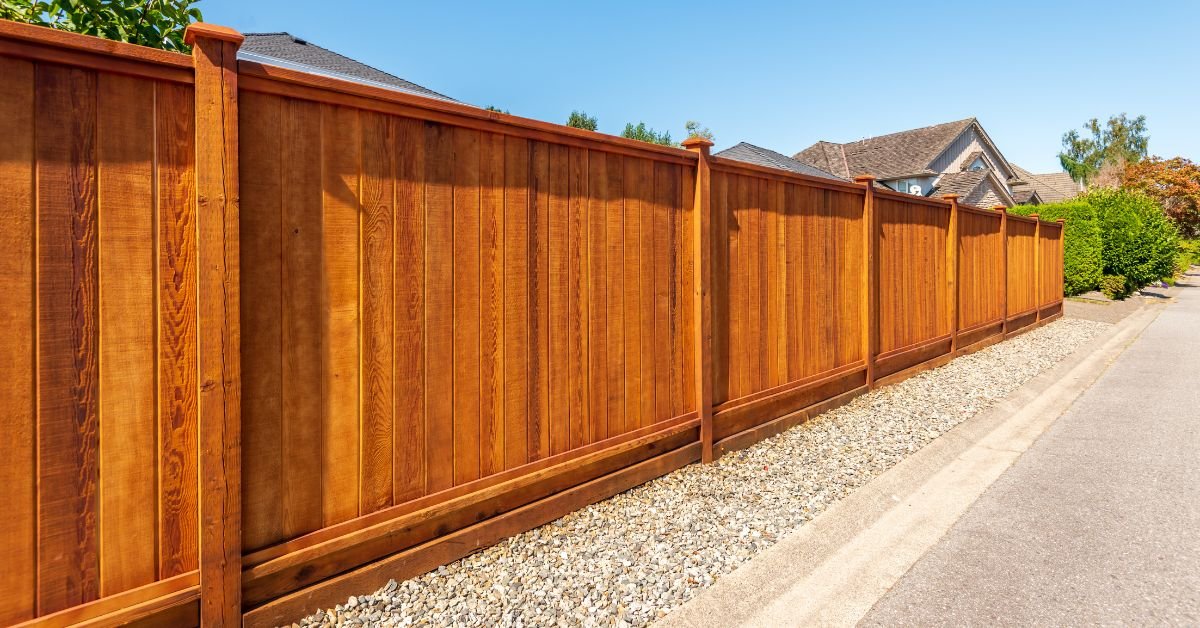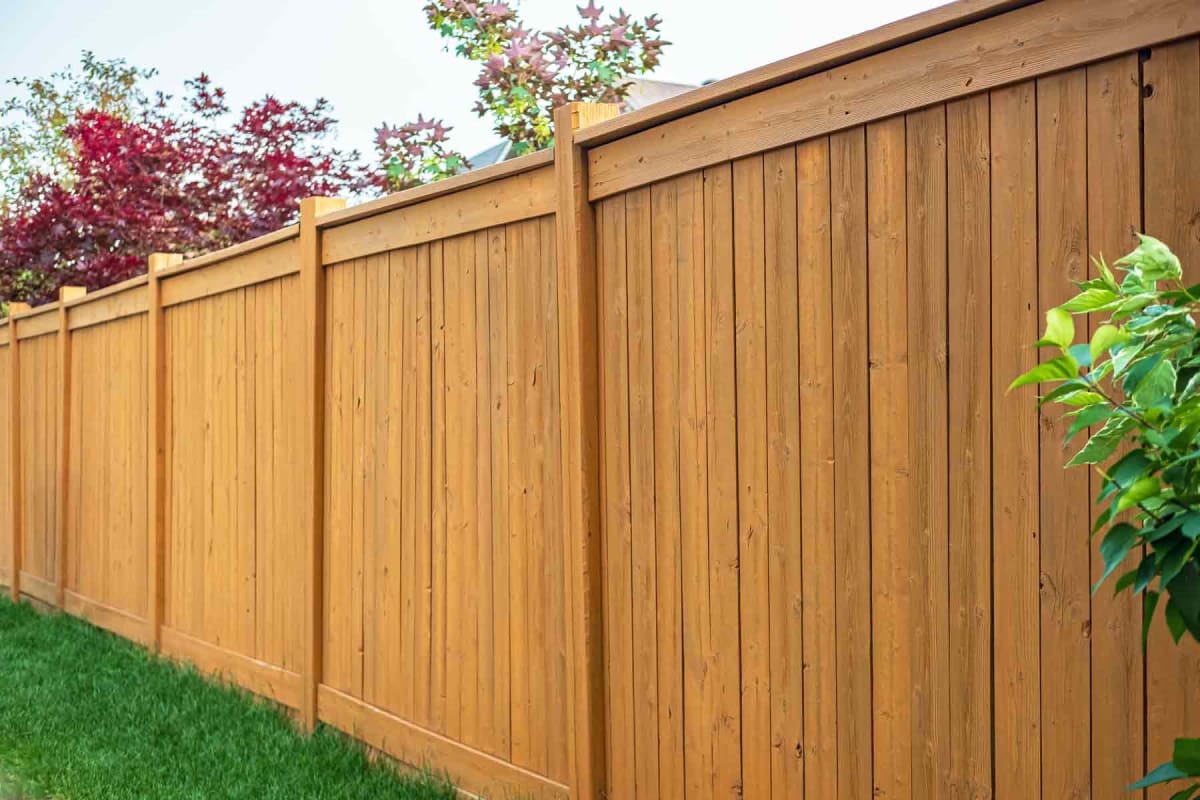All Categories
Featured
Your fence is revealed to numerous climate condition year-round, and while it acts as a crucial part of your home, it's additionally one of one of the most prone aspects when it concerns weather-related damage. Rough winds, hefty rain, severe temperature levels, and UV exposure can all take a toll on your fencing's integrity, bring about put on and tear. Thankfully, there are a couple of steps you can take to shield your fence and lengthen its lifespan. Below are some effective techniques to safeguard your fencing from weather-related damage.
Wooden Fencings: While wood is a classic choice for fencing, it is prone to rot, insect, and warping damages, particularly in areas with high dampness. Pressure-treated timber or cedar is extra sturdy, however routine maintenance is crucial to keep it in great problem. Vinyl Secure fencing: Vinyl is an excellent alternative for those searching for a weather-resistant and low-maintenance fence. It's unsusceptible wetness, won't warp or crack in the warmth, and resists fading from UV rays. Metal Fencing: Wrought iron and aluminum are resilient products for secure fencing, yet they call for a rust-resistant layer to secure them from rust as a result of wetness. A protective layer or routine upkeep can avoid corrosion and extend the life of metal fencings. Composite Fence: Made from a mix of wood fibers and plastic, composite fencings are very resistant to weather components, consisting of uv, moisture, and heat rays. This material offers a balance of sturdiness and aesthetic charm. Picking a material matched to your environment will offer much better protection for your surround the lengthy term.
Seal or Discolor the Wood: Applying a high-quality sealant or stain to your timber fencing develops a water-proof obstacle that stops wetness from going into the timber. It likewise aids shield the wood from UV rays, which can trigger staining and drying out. Reapply Sealer Consistently: Gradually, the safety barrier of your sealant or stain can put on down. Depending upon your climate, it's a great idea to reapply every one to 2 years to maintain the wood safeguarded. This therapy will protect the fence's appearance, stop rot, and prolong its life expectancy.
![]()
For added security, take into consideration utilizing wind-resistant mesh displays or panels in locations where wind is a considerable problem. This extra layer can assist reduce the pressure that the wind exerts on your fence.
Examine Drainage: Make sure that the ground around your fence slopes far from the posts. Proper drainage enables water to move away from the fence, avoiding wetness accumulation. Set Up Water Drainage Equipments: In locations where drainage is a concern, consider adding a French drain or crushed rock around the base of your fencing posts to redirect water away from the framework. Good drain can stop rot, rust, and various other forms of weather-related damage.
![]()
![]()
Concrete Footings: Set fencing messages in concrete to avoid them from loosening up gradually as a result of soil erosion or moving ground. Steel Dental Braces: Adding metal dental braces to fence messages can supply additional stamina and lower the threat of damaging or leaning. Enhancing your articles ensures that your fence will remain in location, also during extreme weather condition.
For wooden fencings, delicately clean the surface with a mild cleaning agent to eliminate dirt and crud. For vinyl fences, make use of a soft cloth and cleansing service to stop build-up. For steel fences, examine for rust and sand it off before using a fresh layer of paint. Verdict. Your fence is a vital function of your residential property, and with the appropriate treatment, it can hold up against the challenges postured by the weather condition. By picking resilient products, carrying out routine maintenance, and strengthening powerlessness, you can secure your fencing from the aspects and expand its life. Regular inspections, using safety coatings, and taking actions to manage wetness and wind direct exposure will certainly help guarantee that your fence continues to be solid, practical, and attractive for several years to find.
- Select Weather-Resistant Materials. The materials you select for your fence can have a significant influence on its capacity to withstand the components. Various products are much better geared up to deal with certain weather. Right here's a breakdown of exactly how numerous materials stand up against the weather condition:
Wooden Fencings: While wood is a classic choice for fencing, it is prone to rot, insect, and warping damages, particularly in areas with high dampness. Pressure-treated timber or cedar is extra sturdy, however routine maintenance is crucial to keep it in great problem. Vinyl Secure fencing: Vinyl is an excellent alternative for those searching for a weather-resistant and low-maintenance fence. It's unsusceptible wetness, won't warp or crack in the warmth, and resists fading from UV rays. Metal Fencing: Wrought iron and aluminum are resilient products for secure fencing, yet they call for a rust-resistant layer to secure them from rust as a result of wetness. A protective layer or routine upkeep can avoid corrosion and extend the life of metal fencings. Composite Fence: Made from a mix of wood fibers and plastic, composite fencings are very resistant to weather components, consisting of uv, moisture, and heat rays. This material offers a balance of sturdiness and aesthetic charm. Picking a material matched to your environment will offer much better protection for your surround the lengthy term.
- On A Regular Basis Treat Wood Fences. Securing it from temperature, sunshine, and wetness variations is important if you have a wooden fence. Timber can soak up wetness from rainfall, humidity, or snow, triggering it to rot and deteriorate. Below's just how you can protect wooden fences:
Seal or Discolor the Wood: Applying a high-quality sealant or stain to your timber fencing develops a water-proof obstacle that stops wetness from going into the timber. It likewise aids shield the wood from UV rays, which can trigger staining and drying out. Reapply Sealer Consistently: Gradually, the safety barrier of your sealant or stain can put on down. Depending upon your climate, it's a great idea to reapply every one to 2 years to maintain the wood safeguarded. This therapy will protect the fence's appearance, stop rot, and prolong its life expectancy.

- Install Windbreaks. Strong winds can cause substantial damage to fencings, particularly those made of lightweight products or tall frameworks. These natural obstacles can aid deflect wind, avoiding straight gusts from damaging your fencing.
For added security, take into consideration utilizing wind-resistant mesh displays or panels in locations where wind is a considerable problem. This extra layer can assist reduce the pressure that the wind exerts on your fence.
- Guarantee Appropriate Water Drainage Around Your Fencing. Standing water is just one of the leading reasons of fencing damage, especially for wood fencings. Water can weaken the fencing blog posts, creating them to rot and deteriorate quicker. To avoid this:
Examine Drainage: Make sure that the ground around your fence slopes far from the posts. Proper drainage enables water to move away from the fence, avoiding wetness accumulation. Set Up Water Drainage Equipments: In locations where drainage is a concern, consider adding a French drain or crushed rock around the base of your fencing posts to redirect water away from the framework. Good drain can stop rot, rust, and various other forms of weather-related damage.

- Trim Overhanging Branches and Vines. Looming tree branches and vines can trigger damages to your fencing throughout storms or high winds. To shield your fencing, cut any branches or plants that hang over or near the fence on a regular basis.
- Enhance Fence Posts. Fence blog posts are vulnerable to shifting, leaning, and rotting, especially throughout periods of severe climate. If your fence is in an area that experiences high winds or freezes during winter months, it's crucial to reinforce the posts to preserve security.

Concrete Footings: Set fencing messages in concrete to avoid them from loosening up gradually as a result of soil erosion or moving ground. Steel Dental Braces: Adding metal dental braces to fence messages can supply additional stamina and lower the threat of damaging or leaning. Enhancing your articles ensures that your fence will remain in location, also during extreme weather condition.
- Regular Examinations and Upkeep. Examine your fencing after storms or heavy rain to look for concerns such as loose boards, sagging messages, or rusted locations. Furthermore, cleaning your fence occasionally assists preserve its problem.
For wooden fencings, delicately clean the surface with a mild cleaning agent to eliminate dirt and crud. For vinyl fences, make use of a soft cloth and cleansing service to stop build-up. For steel fences, examine for rust and sand it off before using a fresh layer of paint. Verdict. Your fence is a vital function of your residential property, and with the appropriate treatment, it can hold up against the challenges postured by the weather condition. By picking resilient products, carrying out routine maintenance, and strengthening powerlessness, you can secure your fencing from the aspects and expand its life. Regular inspections, using safety coatings, and taking actions to manage wetness and wind direct exposure will certainly help guarantee that your fence continues to be solid, practical, and attractive for several years to find.
Latest Posts
Comprehensive Defense for Your Comfort
Published Apr 10, 25
1 min read
Teen Self-reliance Account: A Smart Begin to Financial Self-reliance
Published Apr 10, 25
1 min read
Full Circle Strategic Marketing - Boost Your Brand with Expert Marketing Solutions
Published Apr 10, 25
2 min read
More
Latest Posts
Comprehensive Defense for Your Comfort
Published Apr 10, 25
1 min read
Teen Self-reliance Account: A Smart Begin to Financial Self-reliance
Published Apr 10, 25
1 min read
Full Circle Strategic Marketing - Boost Your Brand with Expert Marketing Solutions
Published Apr 10, 25
2 min read